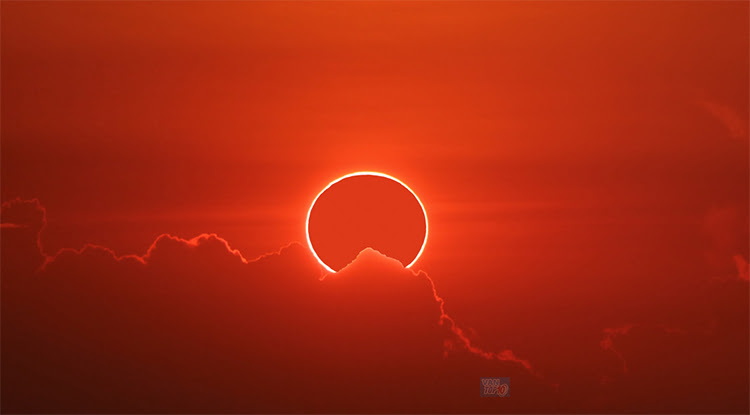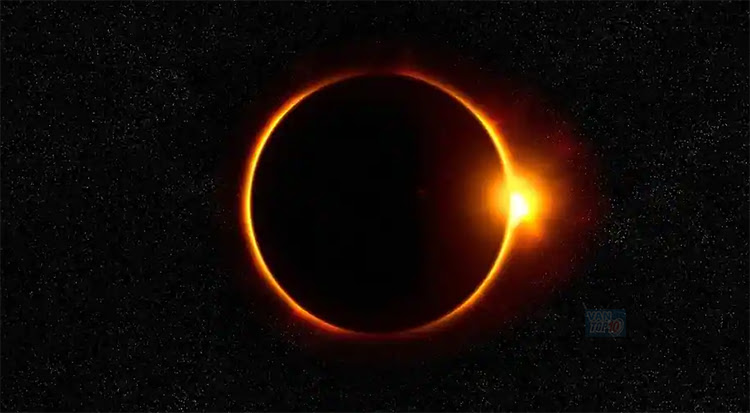While the eclipse is a wonderful experience, it is still necessary to carefully observe security systems. During an annular solar eclipse, there is no time of totality when the Moon completely covers the Sun. As a result, it is not safe to view the annular solar eclipse directly without proper eye protection, especially for sun-oriented viewing. Try not to use standard optics or a telescope to view a solar eclipse without secure sun-based channels installed on the front of the gadget. Ordinary shades are not reliable for attempting to view the sun directly. Annular darkness is an extraordinary type of sun-oriented eclipse. During an annular solar eclipse, the Moon is centered in front of the Sun, yet it is not completely dark, rather a ring of solar eclipse is visible around the edges of the Moon.
Annular Solar Eclipse 2023
Annular Solar Eclipse 2023 will occur on Saturday, October 14. A heavenly sight that will grace the skies of America. It is otherwise vaguely called the ‘ring of fire’. During this amazing occasion, the Moon will pass between the Earth and the Sun, causing fascinating wonders. If you want to see this huge showcase, it’s important to remember that viewing a solar eclipse requires the highest possible level of vigilance to protect your vision. One notable individual, Spear Bass, has collaborated with NASA to share some important safety tips. This circle of light is known as the ring or sometimes the “ring of fire”. Annular sun-driven darkness occurs when the Moon is at its farthest point from Earth in its orbit, causing the Moon to appear dimmer than normal from Earth’s perspective.

Solar Eclipses
According to NASA, an annular sun-driven obscuration occurs when the Moon passes between the Sun and Earth when it is at or near its farthest point from Earth. Since the Moon is further away from Earth, it appears fainter than the Sun and does not completely cover the Sun. Therefore, the Moon appears as a dull plate on top of a larger, brighter circle, resembling a ring of fire around the Moon.
Uday Kotak Resigns
Protecting Your Eyes
Lance Bass emphasizes that for sunlight-based surveys, it is never safe to look directly at the Sun without proper eye protection, during annular obscuration, or during any sun-driven Eclipse . Custom shaders will not work; You really want Annular Solar Eclipse. These goggles must meet the ISO 12312-2 global standard to guarantee adequate protection.
Alternatives to Eclipse Glasses
If you don’t have fogging glasses, don’t try to look directly at the sun. All things being equal, consider using roundabout review strategies like pinhole projectors. You can certainly make one by drawing a picture of the shroud on a nearby surface using a file card with a small opening. Make sure you keep the sun at your back when using this strategy to view the projected image safely.
NASA’s Safety Recommendations
NASA understands the importance of using proper eye protection during incomplete and annular sun-driven shrouding. Looking at the Sun through the lens of a camera, binoculars, optics, or any optical device is incredibly dangerous, as the concentrated sun-based rays can consume the channel and cause serious injury to the eyes.
Total solar obscuration occurs when the Moon passes between the Sun and Earth and completely blocks the Sun’s object. When the Moon hits the Earth, people located in the focal point of its Solar Eclipse will face the Eclipse completely. The sky will become blurry, as if it is sunrise or night. Assuming the rain clouds stop, people en route to total solar darkness can still see the Sun’s crown, the outer atmosphere that is normally mostly obscured by the Sun’s bright essence. Total Solar Eclipse is the main type of Solar Eclipse where viewers can immediately remove their obscuring glasses (which are not equivalent to normal shades) for a short period of time when the Moon is completely blocking the Sun. The next total Solar Eclipse based obscurity in the US will occur on April 8, 2024.
Coco Tap’s Net Worth
The annular Solar Eclipse occurs when the Moon passes between the Sun and Earth, although not when it is at or near its farthest point from Earth. Since the Moon is further away from Earth, it appears fainter than the Sun and does not completely cover the Sun. After this, the Moon appears as a dull plate on top of a large, brilliant circle, resembling a ring around the Moon. The next annular eclipse in the US will occur on October 14, 2023.
A partial solar eclipse occurs when the Moon passes between the Sun and Earth, although the Sun, Moon, and Earth are not perfectly aligned. Only part of the Sun will be covered, giving it the shape of a bow. During total or annular sun-driven darkness, persons outside the area covered by the Moon’s Solar Eclipse see an incomplete sun-driven Eclipse .
Because the Earth’s surface is curved, the shroud can sometimes rotate between annular and absolute as the Moon casts its Eclipse across the globe. This is called hybrid solar eclipse. The arrangement is amazing, although the apparent size of the Moon is somewhat smaller than the Sun, the result is an annular Sun-driven nebula. A crossover overshadow occurs when the shroud changes from annular to collected (or the other way around) in an ambiguous manner.

MCD Property Tax
How can you view the eclipse safely?
“With an annular covering, because Solar Eclipse isn’t completely blocked out, you have to use obscene glasses no matter where you are,” Dr. Fox said. While viewing a sun-based view is a wonderful experience, it is important to remember that looking directly at the Sun, in any event, during darkness, can cause serious eye damage or visual impairment.
Anyone looking upward should do so only with the aid of protective review equipment such as supported obscuring glasses or a pinhole projector. Viewing any piece of bright Solar Eclipse through the camera’s focal point, optics, or telescope for no unique reason that passes in front of sun-based channel optics can cause serious eye injury.
Ways to watch a solar eclipse safely on October 14
It provides tips on the most efficient method to safely view the annular sun-based shroud of October 14, 2023. Or on the other hand, click here for a printed article on sun-powered obscure health. Also, coincidentally, Solar Eclipse based 25 is also moving upwards. This means that soon the number of spots on the Sun will continuously increase. In light of this, any of these safe sun-based survey strategies may allow you to appreciate the following sunspots sooner.
Solar Eclipse 2023 Date
Overview of the annular solar eclipse path
On October 14, 2023, the path of the annular Solar Eclipse begins in the Pacific Ocean, arriving off the coast of Oregon. Then, at that point, the route heads southeast through Nevada, the Four Corners region, and Texas. After this, it crosses the Inlet of Mexico and the Yucatán landmass, in addition to parts of Central America. Finally, it crosses Colombia and Brazil in South America.
The closer you are to the annular path (red line on the graph at top), the more the Sun will be obscured by the Moon. Additionally, beyond this path, viewers will see a partial Solar Eclipse . Amazingly, during a period of three hours and 34 minutes, the Moon’s umbra will cross an 8,574-mile-long (13,800 km long) track, covering 0.57% of Earth’s surface area.
Get Latest Tech Hub Updates